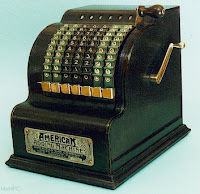 I was humming Christmas carols to myself last night, and I noticed that an awful lot of them start on the fifth scale degree. "Away in a Manger," "Lo, How a Rose E'er Blooming," "Hark! the Herald Angels Sing," "Il est né," "Silent Night"—lots of them begin with sol. And, being me, I wondered: what kind of a data set would I need to see if this is a statistically significant variance? (Yeah, I'm that much fun at parties.)
I was humming Christmas carols to myself last night, and I noticed that an awful lot of them start on the fifth scale degree. "Away in a Manger," "Lo, How a Rose E'er Blooming," "Hark! the Herald Angels Sing," "Il est né," "Silent Night"—lots of them begin with sol. And, being me, I wondered: what kind of a data set would I need to see if this is a statistically significant variance? (Yeah, I'm that much fun at parties.)Because of my job, I always have lots of Presbyterian hymnals lying around, so I used one of those. I tallied all the initial melodic scale degrees for the Christmas hymns, and then did the same for the rest of the book. Note that I tallied hymns, not tunes; if a tune was used more than once, it got counted more than once. (I skipped the service music.) A few of the tunes (less than 10) were chant-based, which didn't always make it readily apparent what tonic was; I made judgment calls based on the prevailing harmony. Here's what I got:
Christmas hymns (39):The positions of the 1st and 5th scale degrees are pretty much reversed. In fact, if you take the non-Christmas hymns as representing the expected distribution of initial pitch level, and then run a Pearson chi-square test on the Christmas hymns, you get a chi-square value of 6.385 (I hope I did that right; any mathematically-inclined readers out there should feel free to check my work); convert that to a probability (I used Richard Lowry's online calculator) and you get 0.0411—that is, there's about a 4% chance of finding yourself as far out on the tail of the distribution as the Christmas hymns are.
Scale degree 1: 13 (33.3%)
Scale degree 3: 7 (18.0%)
Scale degree 5: 19 (48.7%)
Non-Christmas hymns (518):
Scale degree 1: 233 (45.0%)
Scale degree 3: 84 (16.2%)
Scale degree 5: 196 (37.8%)
Other: 5 (1%)
Weird. Why would Christmas songs be more likely to start on sol than do? Maybe it has to do with the season of Advent, the four weeks before Christmas in the Christian calendar. It's the only part of the church year that's specifically devoted to waiting (Lent, the period leading up to Easter, is much more about penance and reflection). By the time you get to Christmas itself, you've been spiritually standing around for the better part of a month. Slow carols tend to start on sol and then take their time getting to tonic, perhaps a musical reminder of the joys of expectation; fast ones jump in with a solid V-I cadence, a harmonic reassurace that, yes, you've made it, the day is finally here.
Or maybe it's just a coincidence. Something to listen for over the weekend, though.
Update (12/22): Critic-at-large Moe pointed out to me that my math was only half right—I did the chi-square test on the percentages, which would be the equivalent of a 100-Christmas-hymn sample. If you use the actual 39-hymn sample, the chi-square is 2.63, which gives you a probability of 0.2685—about a 27% chance, in other words. To my taste, that's still too far out on the curve for a random variance.

3 comments:
I have a possible answer here. My apologies in advance.
This is exactly the kind of crap I read this blog for :) lol
I'd check your math but I just spent six days doing physics and I'm done for awhile.
Less intensive math, but it is worth noting that more hymns that start on scale degree 5 are Christmas hymns than the hymns at large are. (8% and 7%, respectively. It took me a good ten minutes to figure out how to say that and it still doesn't make much sense.)
You do imply that direction of causation, but the numbers support it! I suppose this is what happens when the musicologists read Freakonomics.
Post a Comment